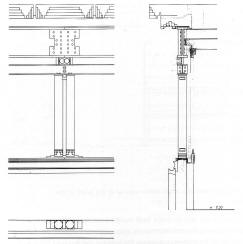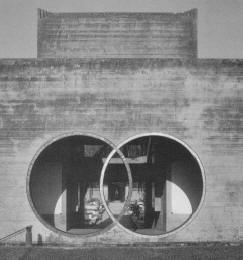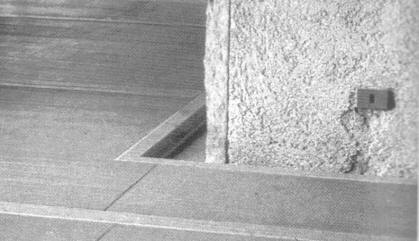
Scarpa also experimented with new modern ways of interpreting an ancient order. In the attic colonnade in the Banca Popolare di Verona of 1978, he uses supports and architrave in metal, frieze in colored mosaic, and cornice in white Botticino Stone. Scarpa wrote, "Modern language should have its own words and grammar just as it happened in the case of classical forms."

Scarpa also tended to consolidate his work about iconic foci or sculptural pieces. This conclusion is drawn from the idea that Scarpa believed engineered forms should take their cues from the overall piece in question. An example of this would be that a sculptural mount should be regarded as integral parts to the whole. they should have the same "plastic unity" to the sculpture.
Scarpa uses a duality in his projects that aren't always immediately noticeable. He also uses the Vesica Piscis (Bladder, Fish) a lot in his works. This is a double circle motif that is similar to the ying-yang symbol that we are all accustomed to. He uses a module of 11cm whenever possible, and the text makes note that carlo scarpa is composed of 11 letters. The italian tradition of constructing a hollow tile partition wall is 11cm as well. This duality is extremely evident in his funerary architecture. In his Brion Cemetery, Scarpa divides the entry into 2 distinct zones. The Blue ring on the right favors the reflecting pool, while the red ring favors entry to the left. The rest of the compound is covered with a greenswad. These two colors recall the snake eating its own tail. The red head signifies fire, while the green tail represents water. This entry is a visual example of the vesica piscis.

This cemetery uses enigmatic displacement where light and heavy construction are mixed such as steel doors that serve to close openings of a chapel and adjacent storage room. One mode of construction is filled with lacquered plasterwork while the other is loaded up with the ballast of concrete panels cast in situ. One is appropriate for a formal entrance while the other is appropriate for a utilitarian opening.
The museo di Castelvecchio used the subtleties of functionality and ornament in a more cognitive and critical light. The building would be treated as a promenade with progress being marked by the discreet articulation of different elements. Water movement in the forecourts were imperceptible, freestanding radiators in the Querini Stampalia are used to quicken and deflect circulation through space. Castelvecchio's changing interior arises from different materials and the articulation of seams, steps and borders that check progression.
